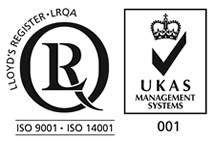
Main Products
Copyright 1998-2025 Firmetal Group All Rights Reserved. | Sitemap
In the industrial production of niobium alloy, the powder is first made into alloy billets, and then high-temperature sintering or melting and casting methods are used to obtain ingot billets or castings. However, melting and casting methods are the most commonly used, mainly including electronic melting and electric arc furnace melting.
The production of niobium alloy billets generally includes two methods: reduction method and powder metallurgy method. The reduction method, also known as the one-time reduction method, involves adding niobium pentoxide to the reducing agent niobium carbide and alloying elements, mixing the ingredients, pressing them into shape, and then reducing them in a vacuum furnace to obtain alloy billets.
Powder metallurgy, also known as the secondary reduction method, involves first obtaining metallic niobium powder through carbothermal reduction, then adding alloying elements and vacuum reduction to obtain alloy billets. The equipment for sintering or casting niobium alloys is the same as that for metallic niobium. The main equipment used for sintering niobium alloy billets includes vacuum blast furnaces and vacuum medium-frequency induction furnaces. The equipment mainly used for melting and casting adopts electronic melting furnaces and vacuum consumable arc furnaces. The sintering or casting process of niobium alloy is also very similar to that of metals, and will not be repeated here.
Two process methods can be adopted: powder metallurgy and vacuum melting. Compared with the smelting method, the powder metallurgy method is costly and has a poor purification effect, so it is rarely adopted nowadays. The smelting method can obtain ingots and billets with high purity, uniform composition and properties. The electron beam melting method is commonly used to prepare pure niobium ingots. The production of niobium alloy ingots and billets generally adopts the double melting process of electron beam and consumable arc furnace. That is, hydrogenated and dehydrogenated niobium powder is mixed with alloy element powder to make electrodes, which are then melted in an electron beam furnace for purification. The content of alloy elements is analyzed and adjusted, and then melted in a vacuum consumable arc furnace to form ingots with uniform composition. Volatile alloying elements (such as titanium, vanadium, aluminum, chromium, etc.) should be added during consumable arc melting.